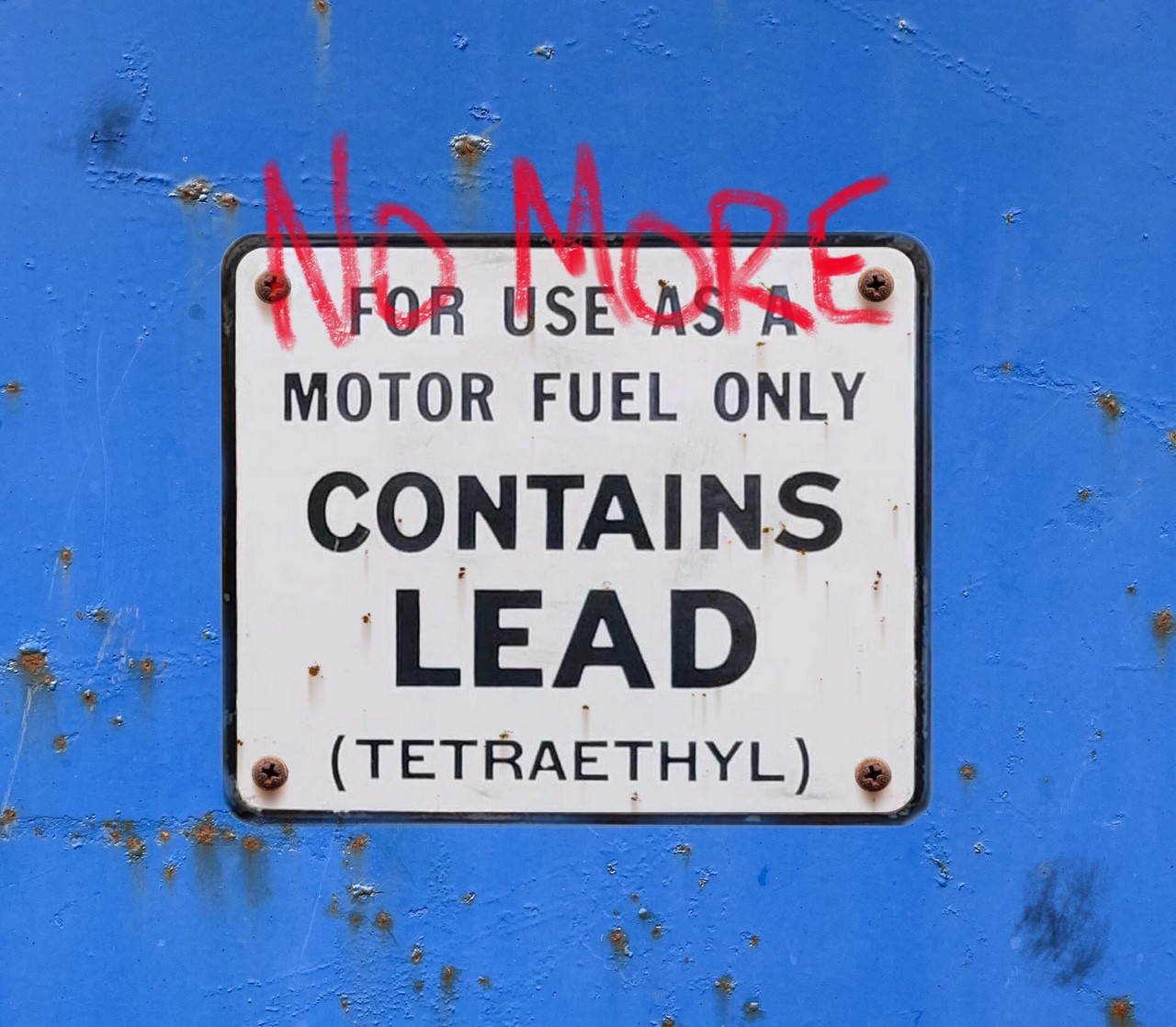
Sign that used to appear on leaded gasoline pumps.
American Chemical Society | Industry | Industry Matters Newsletter | Getting the Lead Out
Get The Lead Out
Industry Matters Newsletter 18 November 2021
The end of August 2021 was the end of a sad century in
the history of chemistry. Headlines
proclaimed the world finally
stopped using leaded gasoline.
The
UN announced Algeria used the last of its automotive leaded gasoline
stockpile on August 30.
Looking through today’s eyes, knowing the damage caused
by leaded fuel, it seems impossible to consider putting lead into gasoline.
Indeed, much of the
reporting on leaded
gasoline paints the inventor, Thomas Midgley, as a Shakespearean
villain. Midgley is declared by
some to be the person responsible for more
environmental damage than anyone else in human history, the
individual chemist responsible for impacting the most lives.
The history is far more complex.
My first encounters with the Midgley story conjured a
picture of a rogue chemist operating on the fringes of the chemical enterprise.
I was wrong. Midgley was
awarded both the Perkin and Priestley medals, two of the highest honors in
chemistry. He was elected to the
National Academy. He was
president of the ACS and a long-time board member.
He was mainstream. He was
lionized for his accomplishments, especially leaded gasoline.

Sign that used to appear on leaded gasoline pumps.
Attempts to get more horsepower out of internal
combustion engines prompted a move to higher compression.
Pushing to higher compression ratios dramatically increased engine
performance, but uneven combustion caused engine knocking.
In 1921, Midgley found tetraethyl lead (TEL) proved effective at very low
concentrations to stop knocking.
Added at 0.4 g/L, it doubles the horsepower of an engine. To reach the same
horsepower, an engine could be half the size, burning half the fuel. TEL
effectively doubled the constrained gasoline supply of the day.
It was nothing short of revolutionary, except for the toxic part.
Electrification stands tall as one of the major ways the
world will decarbonize. Many of the
materials we’ll need for the photovoltaics, the wind turbines, the batteries,
and the wires are metals. The
extraction, smelting and purification will release lead from the ores. There
aren’t zero lead options. We face
Midgley’s dilemma, trading one environmental burden against another.
Determining an acceptable level of lead emissions needed
to reduce greenhouse gas emissions is, admittedly, a fool’s errand, fraught with
peril and reliant upon many potentially flawed assumptions.
I’ll use a false equivalency to set the limit, just for the sake of
argument. I’ll take the lead pollution
created in electric vehicle production, assume EV CO2 emissions are
zero, and estimate how much lead is released for those reductions.
Many materials
associated
with lead are needed for EVs, but I’ll consider only copper.
Copper
production today releases nearly
13 thousand tons of lead.
EVs will make up
7.5% of the
operating fleet in 2030, increasing copper
demand by 2.8 million tons.
About 1800 tons of lead emissions will be associated with increased copper
production needed just for EVs. I’ll
assume 7.5% reduction in CO2.
That reduction will release about 8 grams of lead per ton of avoided CO2
just for the copper associated with EVs.
Applying this factor to the current global gasoline
market of over
900 million tons, accounting for
3 billion tons of CO2 emissions, gives 13.5 ppm as the lead level
in gasoline to halve the CO2 as proposed in the thought experiment.
CO2 emissions are halved while emitting lead at the level EVs
do per avoided CO2. That
is about one fortieth the level in leaded gasoline and much more than I
expected. Peak leaded gas use in
the U.S. occurred in 1970, placing 250 thousand tons of lead into the
environment. For all the rhetoric
about no safe lead levels, our best environmentally friendly technologies have
an environmental lead footprint too close for comfort to leaded gasoline, a
technology pariah.
Midgely both knew and experienced the hazards of lead.
Today, he is pilloried by many for concluding the benefits were worth the
risk. Used in products or as a
byproduct associated with other manufacturing, lead emissions continue.
We continue to face Midgley’s dilemma.
Just as he did, we trade benefits against lead’s risks.
Editor’s Note: If you enjoyed this piece by Mark Jones,
you may be interested in reading an
expanded
version of this article, which recently appeared in R&D World.